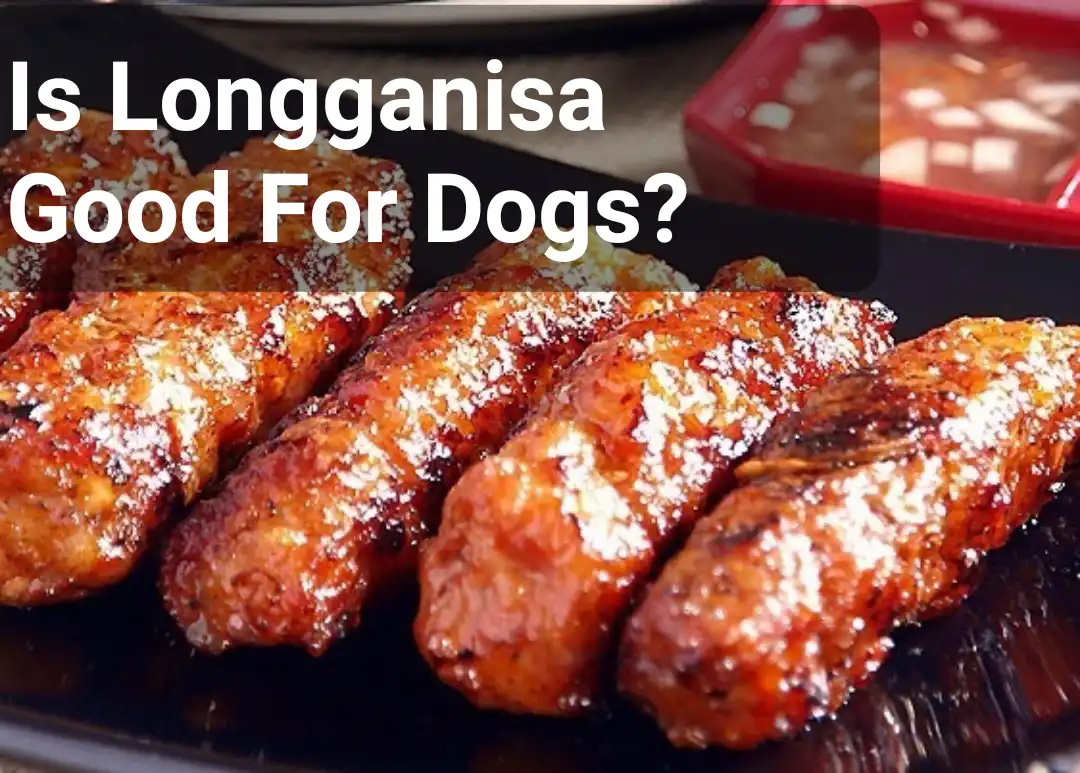Is Longganisa Good For Dogs? Can Dogs Eat Longganisa?

Pork has always been a major part of Filipino dishes, just like the ones used in palabok and other Filipino-style foods. When a pig is killed and butchered, the premium parts are utilized in roasted or grilled dishes; the bones and leaner cuts are used in stocks and stews; and the remains, which are usually rich in flavors, are used in making longganisa.
I have enjoyed longganisa for years in different styles from different countries, and there are hardly any other foods that satisfy my sausage cravings. But while it is safe for me to have some, is it safe for dogs to have longganisa? Here is everything you need to know.
What is Longganisa?
The origin of longganisa can be traced back to Spain. The version offered in Spain is called chorizo; it is made up of fresh pork sausage flavored with vinegar, garlic, cinnamon, anise, and paprika, then smoked and cured. However, the typical longganisa must be cooked before eating.
The Spanish empire, at its peak, spread longganisa to various cultural cuisines, and today, you can find numerous varieties across the globe, with Mexico, Uruguay, Chile, Puerto Rico, and El Salvador adding their cultural touch to the cuisine since the Philippines was an integral part of the then-Spanish trading network, which is how longganisa found its way into the Filipino culinary culture.
Most notably, there are two variations of longganisa in the Philippines, spicy (recado) and hamondo (sweet). The longganisa is characterized by a hard texture, and its taste is dependent on which ingredients are used. To get the most out of this dish, serving it with pickled vegetables or fried eggs and garlic fried rice is always my favorite combo.
Is Longganisa Good For Dogs?
A typical longganisa is made with pork meat, which is fatty and can lead to pancreatitis in large amounts over time. Further, since garlic powder and onions, which are toxic to dogs, are used in most longganisa recipes, there is also the risk of high salt content, making longganisa not good for dogs.
Pork is not a bad meat for dogs; dogs can enjoy pork meat in moderation, provided it is not seasoned or salted. However, it could still contribute to pancreatitis in dogs. While we don’t know the exact cause of pancreatitis in dogs, we understand that fatty foods can also contribute, and pork is a fatty food that can be used as an occasional treat but is not a major source of regular food for dogs.
The next big problem to be encountered is salt. Salt, in moderation, is not harmful to dogs. All dog foods contain a certain amount of sodium, which can help keep body fluids in balance and is also important for nerve and muscle function. However, longganisa is made with salt and is also cooked with salt, making the sodium content too high, which can lead to sodium poisoning with symptoms like vomiting, loss of appetite, excessive thirst, and even disorientation.
Further, onions and garlic are necessary constituents of longganisa; you can’t enjoy a plate of this dish without the touch of fried garlic and sometimes onions. While these can be a good combo for humans, they spell destruction for dogs. While your dog needs to consume a certain amount of these vegetables to experience anemia, consuming the two at once may even mean lesser amounts may be toxic. Your dog is not meant to be eating foods made with onions and garlic.
My dog ate longganisa. What should I do?
If your dog ate 1/5 of a longganisa sausage, they may not experience any adverse effects as the sodium and garlic content may not be sufficient to cause problems. While these items are toxic to dogs, it doesn’t mean the slightest quantity would trigger toxicity symptoms.
For your dog to have adverse reactions, they need to consume lots of longganisa along with the sauce, if any. To be sincere (you can confirm from your vet), a whole longganisa sausage is not capable of causing harm (depending on its size), but it is best to err on the side of caution by not feeding them to your dogs.
Safer Alternatives to longganisa for dogs
Instead of giving your dogs some longganisa, it is best that you offer other treats that will not harm your canine buddy; rather, they will provide nutrients that will nourish them. Here are the alternatives to longganisa:
Dog safe turon
These treats are one-of-a-kind, and all the dogs I have offered to love them. Turons are made with thin slices of bananas and jackfruit, wrapped in eggrolls or banana wrappers, and baked before serving them to your dog.
Chicken and turkey treats
Chicken and turkey in all their forms can provide nutrition and fun for dogs. Uncooked chicken or turkey necks are fun for dogs to chew, and they are effective in cleaning your dog’s teeth, preventing tartar buildup while keeping their breath fresh. Chicken and turkey can be offered to dogs in cooked, raw, or baked forms and can be accompanied by little rice or glass noodles.
Can Dogs Eat Longganisa? Final Thoughts
Dogs can have some longganisa safely, but it is not recommended at all since it contains ingredients that are harmful to dogs, like onions and garlic, plus it has a high sodium content, which could lead to sodium poisoning in dogs, making it not a great treat for dogs. You’re better off offering healthy and nutritious foods to your pooch.



